FemGen — A Conversation With Sarah Ridgley
Leading Women In Web3 Interview Series
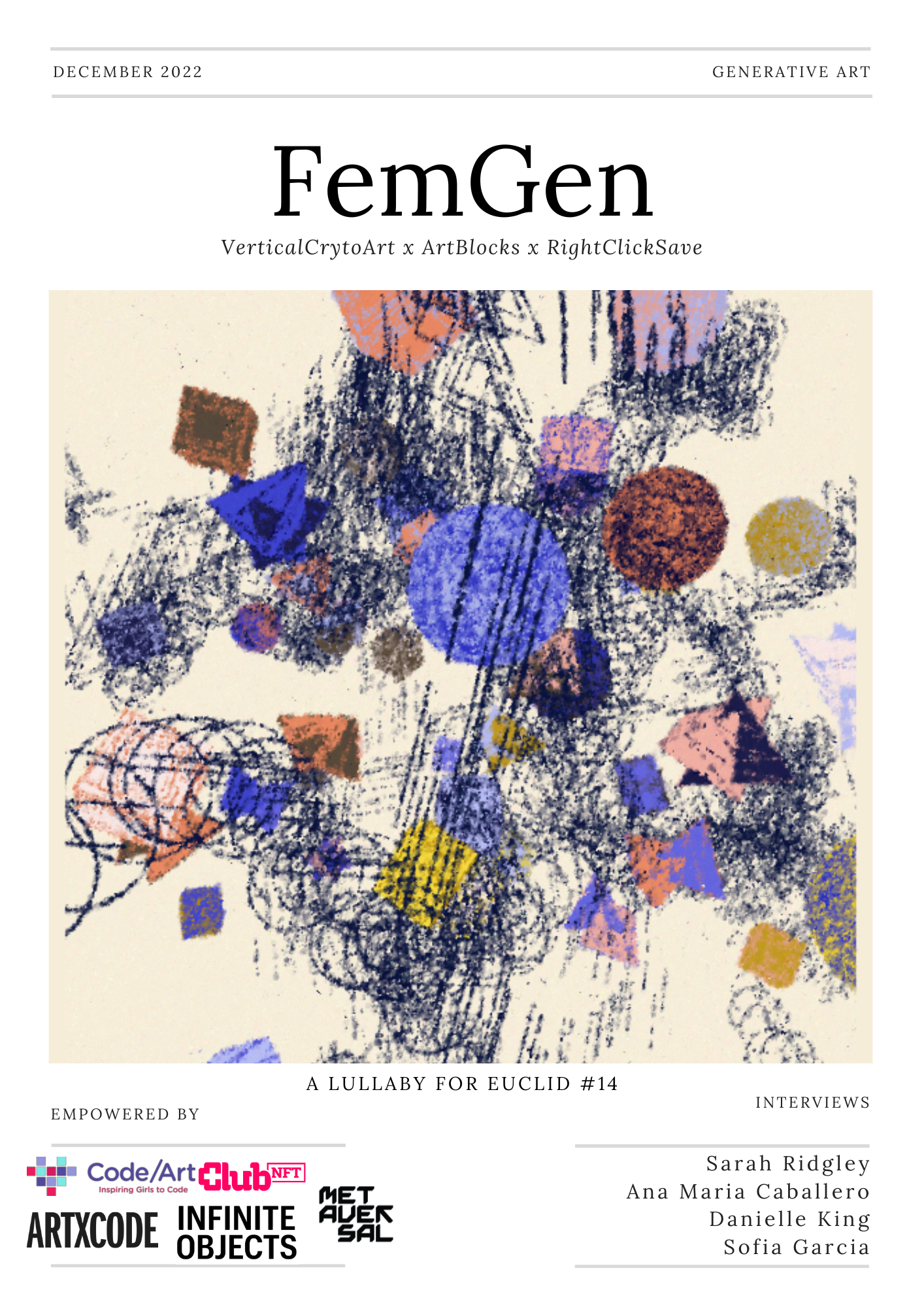
Author Design + Sarah Ridgley: A Lullaby for Euclid #5
FemGen, a one-day event & exhibition, was held on 3rd December 2022 during Art Basel Miami highlighting artists identifying as women amongst the generative art and creative coding community.
Sarah Ridgley is a generative artist based in the USA whose work focuses on reflecting the human hand in collaboration with the computer, and themes from the natural world in a completely code-driven way. The use of p5.j5 processing and javascript across her art blends a hand-drawn aesthetic with code: unveiling the beauty of generative repetition. In designing bespoke algorithmic brushes to complete each piece she is able to coax computers into creating beautiful, organic shapes and lines.
Her work, process, and thought leadership are venerated as much for their authenticity as for the signature highly-ordered chaos . This is symbolised by the dialectic between writing very organized instructions to direct the code, but then introducing random parameters for the computer to try an infinite variety of results. As a leading international artist, her insights offer potent advocacy and nourishment towards the ongoing pursuit of equal opportunity within (and without) the web3 ecosystem.
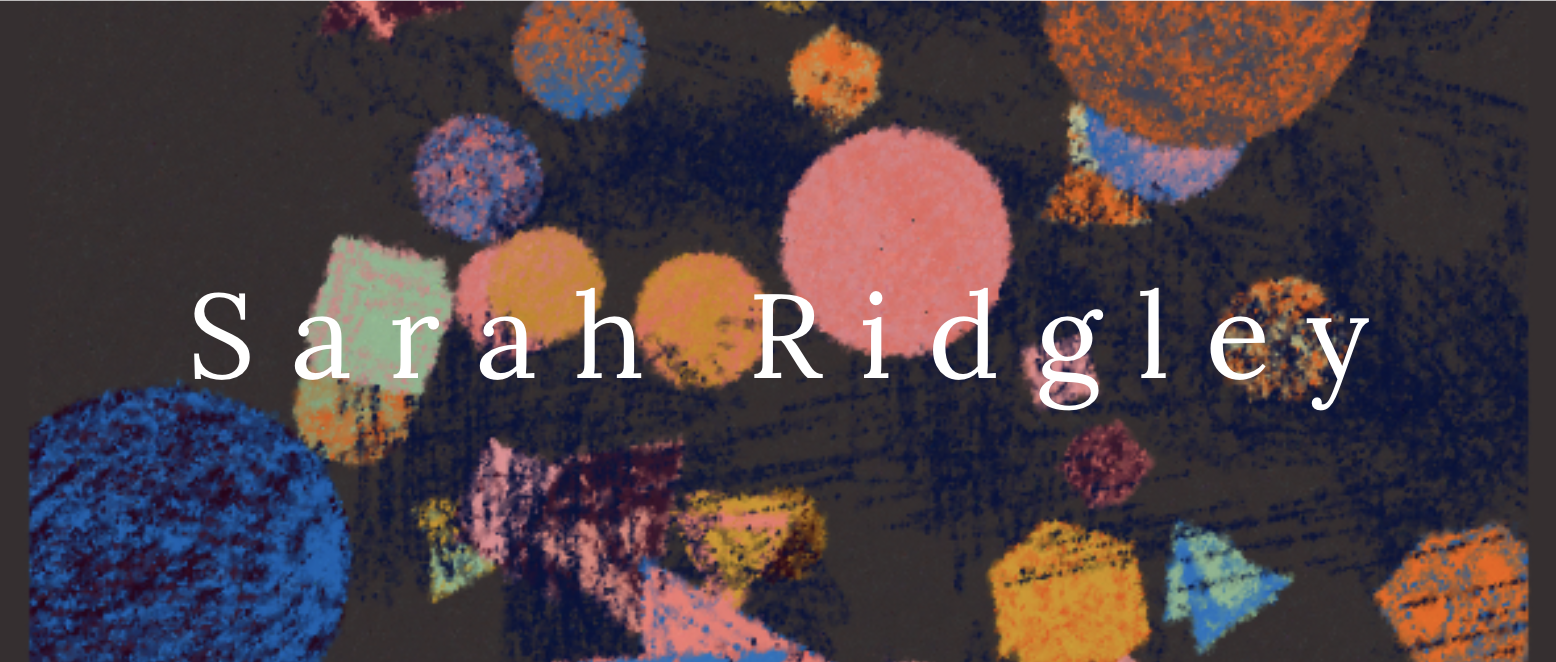
Sarah Ridgley: A Lullaby for Euclid #5
Apart from your own work, what at FemGen most resonated with you? And why?
My favorite part of FemGen was seeing all the different works by so many artists I love displayed together. It gave this beautiful message on the breadth of creativity from females working with technology and code. I was also happy to see the Code/Art student projects included in the exhibition. It’s so important to encourage young women and get them excited about pursuing creative coding, and what better way than the thrill of being part of an exhibition.
What inspired you to start to code? Who were your role models and/or teachers?
I’m not sure what exactly sparked my interest in coding. I had a website for my print work, and I was interested in learning more about web design and how to use JavaScript. While I was researching that, I came across p5js and the world of creative coding, and it really resonated with me. I never really realised that you could make art using code, but once I started seeing all the different work people had made, I knew that I wanted to do that myself.
My first instinct when I started working with code was to give my work a more natural feel, and to lean away from strictly mathematical outputs into something more organic. I had this desire to reflect my own hand working together with the computer, and that meant adding some imperfections to the perfectly straight lines and shapes that computers are so good at doing. I think each artist approaches this in their own way, and the search for pushing yourself into your work is part of what makes each artist unique.
Some of the first generative artists I came across were Jared Tarbell, Tyler Hobbs, and Anders Hoff. They all have such a lovely way of working with code to create organic shapes and texture, and inspired me that the ideas I had could actually be realised with code. I also spent a lot of time watching Daniel Shiffman’s videos (The Coding Train) which would always make me laugh even when I was near tears trying to solve an issue. Vera Molnar is another artist I greatly admire. I found her ‘Lettres à ma mère’ when I was working on early versions of my own lettering algorithm, and I was delighted to see a female pioneer of generative art working with both code and asemic writing.
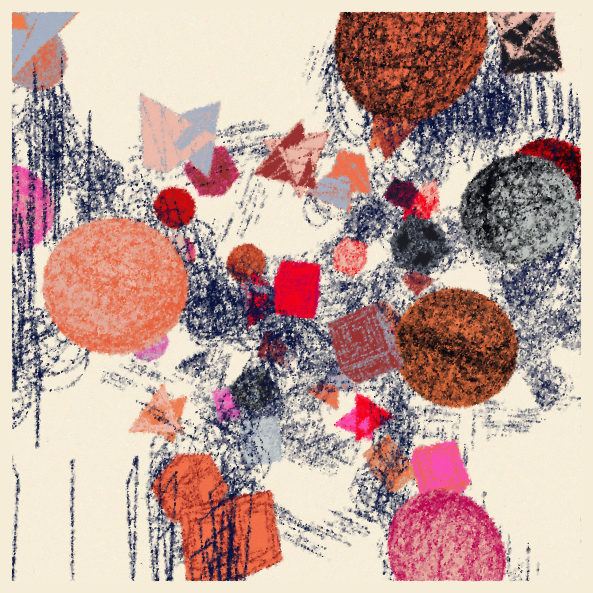
Sarah Ridgley: A Lullaby for Euclid #4
How would you characterise the FemGen mission/movement?
I see the FemGen movement as an important mission to raise awareness of the issues facing women working with code, and in the web3 space in general. In order to create a healthy ecosystem, all voices need to be heard. Including the voices of people with a wide range of backgrounds, experiences, and perspectives is much more likely to generate truly innovative ideas and approaches. At the pace web3 is developing, it’s so important to start right now to make sure that we are being as inclusive as possible in both the artistic communities and the platforms being built.
Diversity builds trust and inclusivity. When a community is more diverse, it is more likely to represent the needs and concerns of the broader population, and this can help increase credibility and widespread adoption. In both the art world and the tech world, women have historically been under-represented. Movements like FemGen help shine a spotlight on women working in these areas, and celebrate and encourage them to keep pushing forward.
What would need to be true for this vision to be realised in future? What might stand in its way?
Education and awareness are critical for creating a culture that values and supports inclusion. I am already so impressed with the support that FemGen received, and that so many people are insisting on the importance of diversity within the ecosystem. It’s very encouraging, and as more people start to realise the huge benefits it will have, I am confident they will want to support this vision.
Tell me about your techniques for overcoming creative blocks, learning to code, and collaboration please?
Creative block is a real issue that I confront quite often. I usually start a project with some kind of idea or technique that I want to pursue, and the initial results are generally far from what I was imagining. This can be very frustrating, and in order to keep myself moving forward I have to remind myself that this always happens in the beginning. I try to break things down into smaller steps, and then even smaller steps so that I always have something I can adjust or play around with and never feel truly stuck. There is a lot of experimentation involved in building an algorithm for a generative art project, and one of the most important techniques for me is to push the different variables really far to see if something interesting will start to happen.
When I first started learning to code, I read a ton of different books and tried to expose myself to as many techniques as I could. I felt (and still feel) limited by the things I didn’t know, so I wanted to know everything. This is a continuous journey, but it keeps me excited and engaged with my work.
I have only done a few collaboration projects so far, but it is always a wonderful experience. I love getting input and new ideas from other people, and the critical feedback between us is my favourite part. I’ve never worked with someone else as far as building code together, but it is on my list of things I want to do. I know I would learn so much from an experience like that.
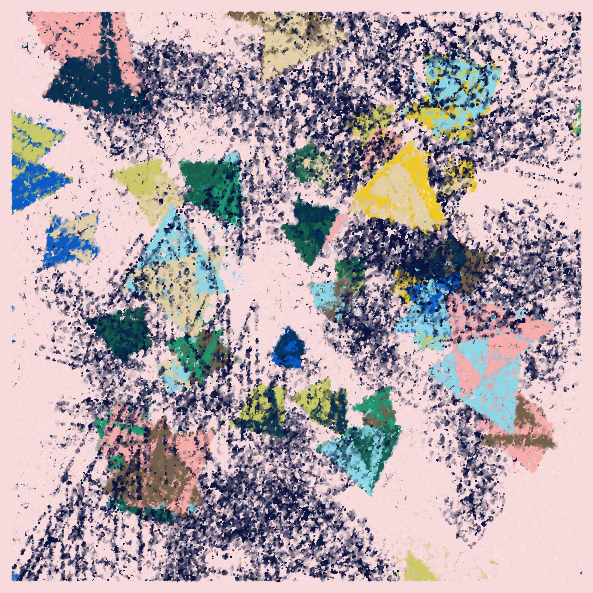
Sarah Ridgley: A Lullaby for Euclid #28
You have produced generative works that have been minted across a variety of platforms and blockchains. This includes being featured on Art Blocks (Ethereum) and Fxhash (Tezos). How would you characterise the key differences between these options, for both collectors and artists ?
I really love both platforms, and they each provide amazing opportunities for generative artists and collectors. Art Blocks was truly revolutionary when it launched. It was the first platform to seamlessly allow generative artists to use the blockchain to provide provenance for their work, and solved so many issues for how to integrate and store the code on-chain. They have also done a fantastic job of bringing attention to the world of generative art and the long history of artists working with code.
To me, the biggest difference between Art Blocks and Fxhash is the way the projects are stored. Art Blocks stores the code immutably on the blockchain, so that as long as Ethereum exists, a collector can always access it and recreate their NFTs, even if Art Blocks itself were to disappear. I love knowing that the code for Himinn is stored permanently on the blockchain and that my clouds will live on as long as Ethereum exists.
Fxhash stores the code in IPFS, which is a bit different, but also allows generative artists other forms of creativity. IPFS does not have the data restrictions that storing the code directly on-chain has, so artists can utilise things like source images, fonts, and extra libraries that cannot feasibly be stored on-chain because of their size. This is a trade-off of course, because those off-chain assets could theoretically be lost over time, although platforms like ClubNFT are working to help with that issue.
I have actually experienced what happens when a generative art platform folds, and the importance of how the code is stored. My project Memory of Nymphaeas was released on the Endless Ways platform, and the code for the project was permanently stored on the Tezos blockchain. The platform unfortunately had to close after the initial launch, but because the code was stored on-chain, my project still exists and lives on.
Fxhash launched at a time when Ethereum fees were extremely high and the environmental concerns of using Ethereum was an important consideration for many artists. They solved this by using Tezos, which has very low power consumption and low fees. Fxhash also has an open policy and allows basically anyone to create a project, without going through any lines or curation. This is especially enticing for newer generative artists, as it gives them a way to experiment with long form generative art and what it takes to successfully create a project, at a much lower risk.
It’s also a lot faster to release a project on Fxhash. The demand for Art Blocks is high, and the waiting period can be prohibitive if you are working with a deadline for an exhibition. This waiting period has caused me to release a few projects on Fxhash that I might have put on Art Blocks. So that’s something else for an artist to consider.
Overall, both platforms offer fantastic opportunities for generative artists looking to use the blockchain. I’ve had the honour of meeting Snowfro (Art Blocks) and Ciphrd (Fxhash), and they are just amazingly kind and genuine people with a real heart for helping artists.
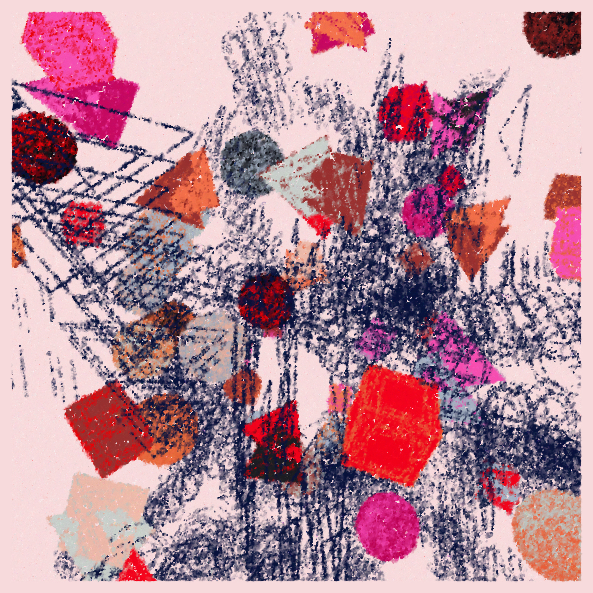
Sarah Ridgley: A Lullaby for Euclid #30
You are a Doctor of Law, and a USA based generative artist. With the caveat that this is not intended as financial advice (NFA) — and readers are encouraged to do their own research (DYOR) — what is your perspective on the question: Who Owns the Copyright to Generative NFT Art?
I would also caveat that this is not legal advice. Each artist should consult their own legal advisor with questions about copyright as it pertains to their work.
The ownership of copyright in a work of art really comes down to who was the actual creator of the work. In general, copyright law protects original works of authorship that are fixed in a tangible form. This includes works of art created with the assistance of a computer. “Assistance” of the computer is a key factor.
There are many approaches to generative art, and different ways an artist might utilize the computer within their processes. Some artists may see the computer as an almost sentient collaborator, and find that the computer is extremely involved in the creative choices being made in the work. Others, like myself, might see the computer as more of a tool to help explore a vast possibility space, but never truly free to make a creative choice that is outside of our defined limitations. Although the computer may respond to some of my requests in unique or unusual ways, I feel that these results still come from within the limitations that I have set for it.
I think NFTs are a monumental development for digital art in that they allow ownership and proveable authenticity to a digital work, while still letting everyone see and enjoy it. Unless explicitly stated, NFTs do not give the owners the copyright to the work, but rather a license to use and enjoy it. This licence also usually includes the right to resell the NFT. This works the same way as purchasing a physical painting or sculpture or other media. The artist retains the copyright, but the collector owns the object and can display it and prove their ownership and control of the object. The owner of a work of art, whether physical or digital, does not own the underlying copyright to the work, unless it has been explicitly granted to them from the artist, or the work is in the public domain.
Of course, there are grey areas in every part of the law, and there are some interesting questions that arise with long form generative art. Because the original collector of the work plays a part in the creation process, in that when they click the “buy” button, the unique hash that is used to form the output is generated. Does this act mean that they might have a claim to some level of ownership of the particular output they had a part in creating? I don’t know the answer to that, but it is something to think about.
Another interesting question is whether the code or the output is the actual artwork. The code is the specific instructions that tell the computer what to do and how to generate the final output. This code reflects the artist’s creative choices and decisions, and is used to generate all the various iterations in a series of work. The final output is the actual visual representation of the work that is experienced by the viewer, and is typically what is most closely associated with the concept of “art” in a traditional sense. In my opinion, both the code and final output are integral parts of the work.
Decentralized technologies such as blockchain and smart contracts have the potential to revolutionize many aspects of the way we live and work. The law, and interpretation of existing law, is constantly changing as the legal framework for this is still being developed. In law, we often find precedent in cases decided over a century ago, so seeing things change so fast in this space is astounding.
What were key highlights & takeaways from the FEMGEN panel you spoke at: “On the Politics of Generative Art?”
This was such a great panel and subject to really dive into. My main takeaway was how important it is to simply talk about these issues and keep having these conversations. The old power structures and biases must be addressed and actively dealt with so that the community can grow in a healthy way.
There has been a lack of diversity in tech for a long time, and without a broader range of perspectives, how can we encourage and welcome women to participate? It will take a commitment from everyone to create an open environment where anyone feels comfortable to join.
There was also a mutual observation made that we need more female role models in this space. This is imperative to encourage participation and help women visualize a journey they could follow. I feel like all the women that participated in FemGen, the speakers, artists, and everyone involved in the exhibition, are excellent examples of amazing role models.
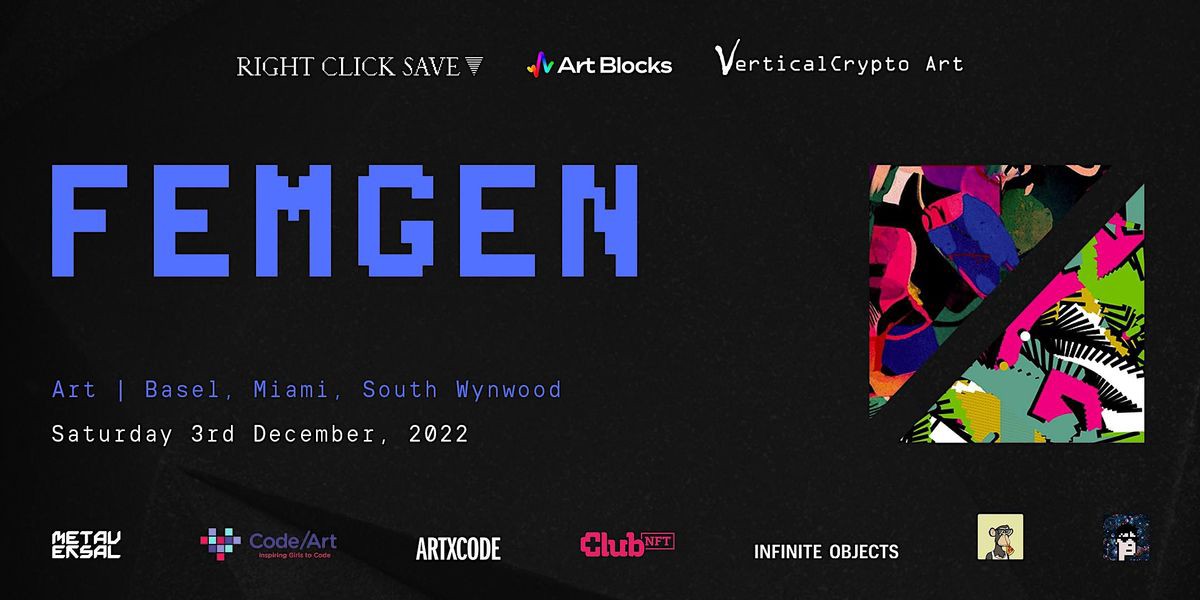
Papa — linktr.ee/papajams

